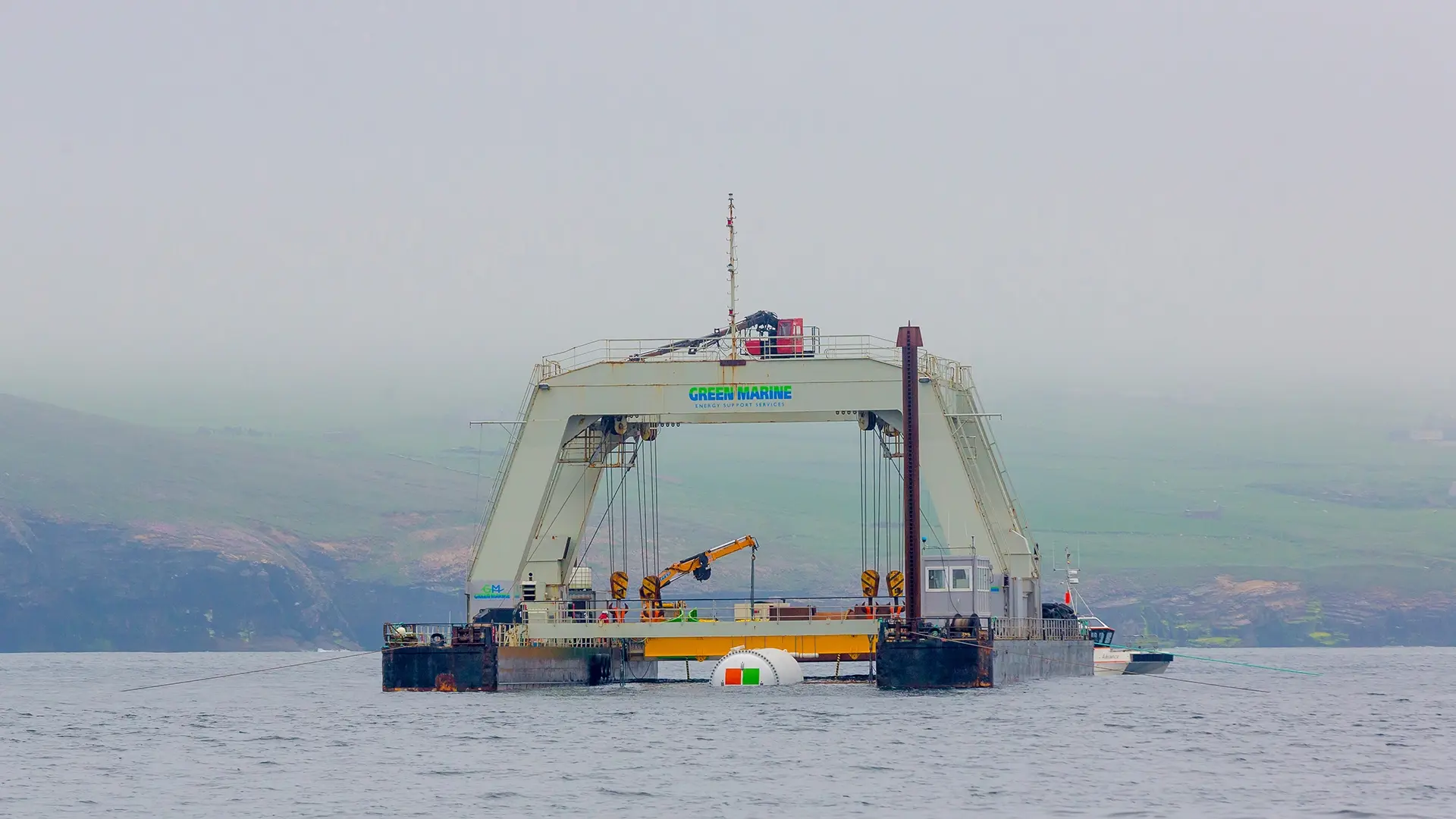Microsoft are looking at putting datacenters under the ocean, which sounds like a really good idea to cool them but I can’t help but think a couple decades from now it’s going to start causing us problems
Please post the article-date in your title!
I linked the original article, the date’s there for all to see if they want it
There was this quote they gave when asked about impact to the surrounding ocean.
Natick uses raw sea water for cooling, with the water returned to the ocean a fraction of a degree warmer than ambient. Due to rapid mixing in ocean currents, the temperature impact just a few meters downstream of the datacenter is undetectable. We used cameras on the exterior of the vessel to observe wildlife during deployment. We found that the datacenter provided an attractive location for sea life, and was quickly colonized by multiple species of fish and other sea life.At a huge scale, that maybe could be an issue if you extrapolate. But as others have pointed out, data centers today already require air and water cooling which isn’t likely as efficient so net gain on the environment is probably worse with land data centers in terms of cooling. And they noted the hardware inside had a higher reliability, potentially due to its pure nitrogen atmosphere in the capsule, so that’s less need for buying replacement servers and performing maintenance.
No clue if this thing is actually feasible beyond small scale due to the very high deploy and retrieval costs. But in my opinion this isn’t like some environmentally oblivious solution.
Well it’s certainly better environmentally than using conventional air conditioning, doubt it would heat up the oceans significantly
Would it heat up the oceans: yes.
Significantly:no.
If this pans out it would be a lot better than what we are doing now.
So how do they deal with the salty ocean water corroding everything? I mean for cooling, they have to exchange heat with it somehow. Looking at pictures of wrecks, any kind of heat exchanger would likely rust or become covered in various lifeforms rather quickly.
I would imagine they can get away with using much heavier, stronger and thicker materials as these things have zero requirement for buoyancy or portability (besides getting them there in the first place)
Not sure how they’d prevent it from being covered in algae and they even mentioned that they noticed sealife was using it as a home
I reckon it’d be a combination of using the hull itsself as a giant heat sync and the fact they can get some pretty ridiculous cooling from the ocean to compensate for some inefficiency with heat transfer
Just my guess though
Why would this be a bad thing? Doubt it happens at any scale but this seems like a perfectly viable way to cool data centers compared to how energy intensive they are today.
I imagine people are concerned about disposal and failures. They are unmaintainable ewaste containers
But without oxygen and with fewer vibrations from cooling, they last 5years longer with no maintenance.
Do you know what salt water does to literally almost any man made materials?
I’m sure the engineers who made this know. And if they didn’t, this is an article from 2018, they would have most certainly found out by now.
Which makes you wonder why there’s no update because this is something that we’ve known about for thousands of years and still need to constantly repaint boats because the ocean doesn’t give a fuck.
Maybe they’re able to use different materials? After all boats need to float so maybe they need to use lighter, less durable materials and have thinner walls
These things could be made as dense and thick as needed because they explicitly need not to float
Not really. It’s not like there’s a nuke reactor in there.
There isn’t a nuke reactor in there, is there?
Now you’re talkin!
At the deployment site, a remotely operated vehicle retrieved a cable containing the fiber optic and power wiring from the seafloor and brought it to the surface where it was checked and attached to the datacenter, and the datacenter powered on.
Sadly, it sounds like power is coming from the shore.
Underwater datacenters could also serve as anchor tenants for marine renewable energy such as offshore wind farms or banks of tidal turbines, allowing the two industries to evolve in lockstep.
But I think this is their plan for energy in the future.
Onshore, wind turbines sprout from farmers’ rolling fields and solar panels adorn roofs of centuries-old homes, generating more than enough electricity to supply the islands’ 10,000 residents with 100 percent renewable energy. A cable from the Orkney Island grid sends electricity to the datacenter, which requires just under a quarter of a megawatt of power when operating at full capacity.
It’s still pretty darn clean.
It’s not clean at all. You’re burying disposable hardware into extremely corrosive salt water and then throwing away the whole thing when it fails. What the fuck is green about that?
All hardware is “disposable” in the sense that it becomes obsolete after a few years, and the electricity to keep using it costs more than replacing it with new hardware with better performance per watt.
Maybe once Moore’s law is finally dead and buried that’ll stop being the case, but it hasn’t happened quite yet.
This certainly isn’t “green” in terms of disposal, but I’m not sure it’s any worse than the status quo alternative of a landfill, either.
But we recycle e-waste. You’re not recycling shit that’s been corroded by the ocean. It’s ruined, not just obsolete. We already have fully-renewable data-centers. This just makes more problems than it solves which is why there’s been no update to this article from 2018.
Would you kindly swap out the memory on that server?
No one does maintenance on the server farms. It costs more money to send someone in than to let the parts slowly die until the farm no longer is economically viable. Once that happens, you sell the whole farm to a recycler.
That sounds monumentally more wasteful.
But it is cheaper.
For microsoft at the expense of the fucking planet.
This is common practice for any large data center.
No it isn’t. What DC do you work at? We recycle hardware as much as fucking possible until its worthless and then it’s sold to anyone who wants it in the company first and then the rest is sold on ebay and craigslist.
Ahhh, so this is why you are so angry in this thread. You’re the competition. Not exactly an unbiased third party.
The container is regarded as a single unit; if a server inside the container fails the functions of that server are offloaded to another available server and it is taken out of service.
Once enough servers in a container are offline the entire unit has all computational load offloaded to another, identical container with sufficient capacity.
Then the now-offline unit is retrieved and serviced; probably a ground-up rebuild of all components.
… but I do like the idea of some dude in a wetsuit trying to replace a memory stick.
Yeah that’s totally more environmently friendly to chuck hardware to the mercy of salt water… What could go wrong there??
The salt water won’t come into contact with anything except pumps, a heat exchanger and the exterior of the container.
The servers live in a nitrogen environment, so it reduces corrosion, I doubt there would be any dirt or dust. It’s going to be an incredible sterile environment.





